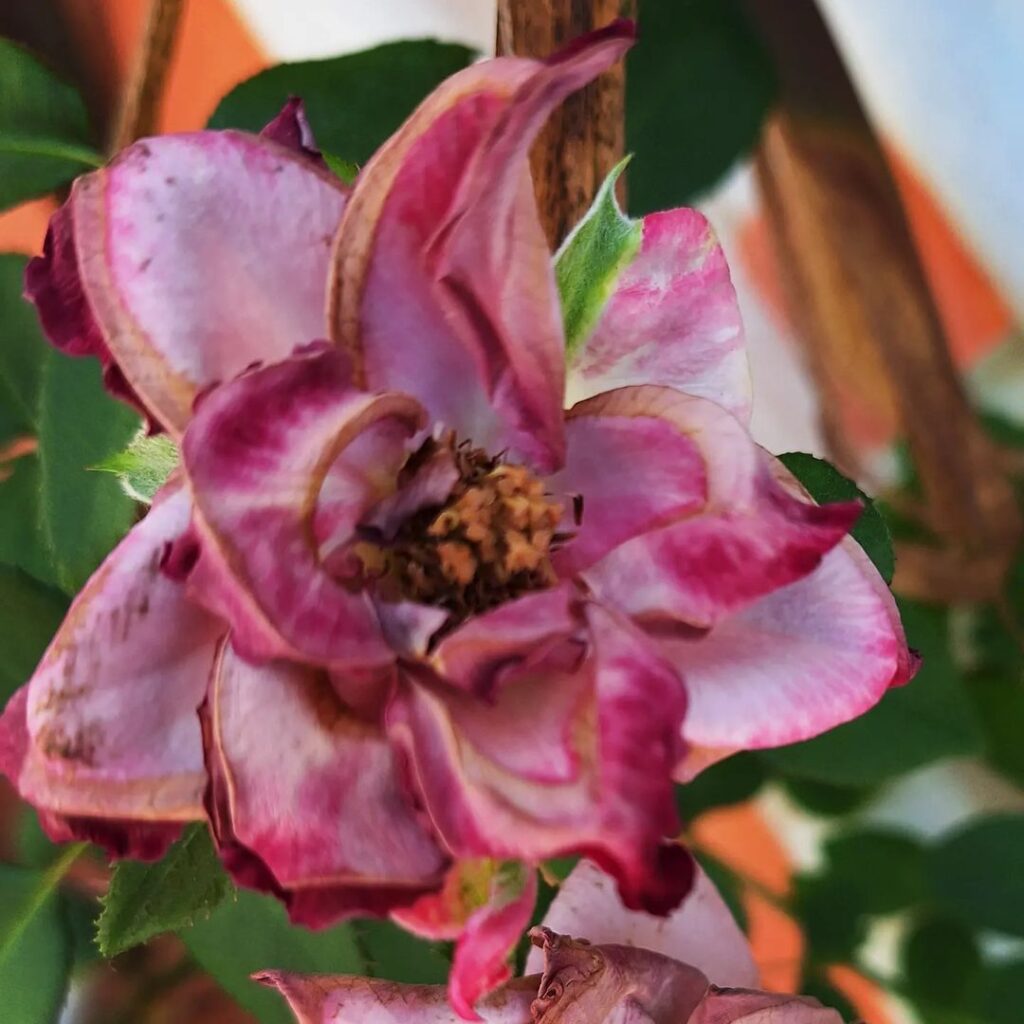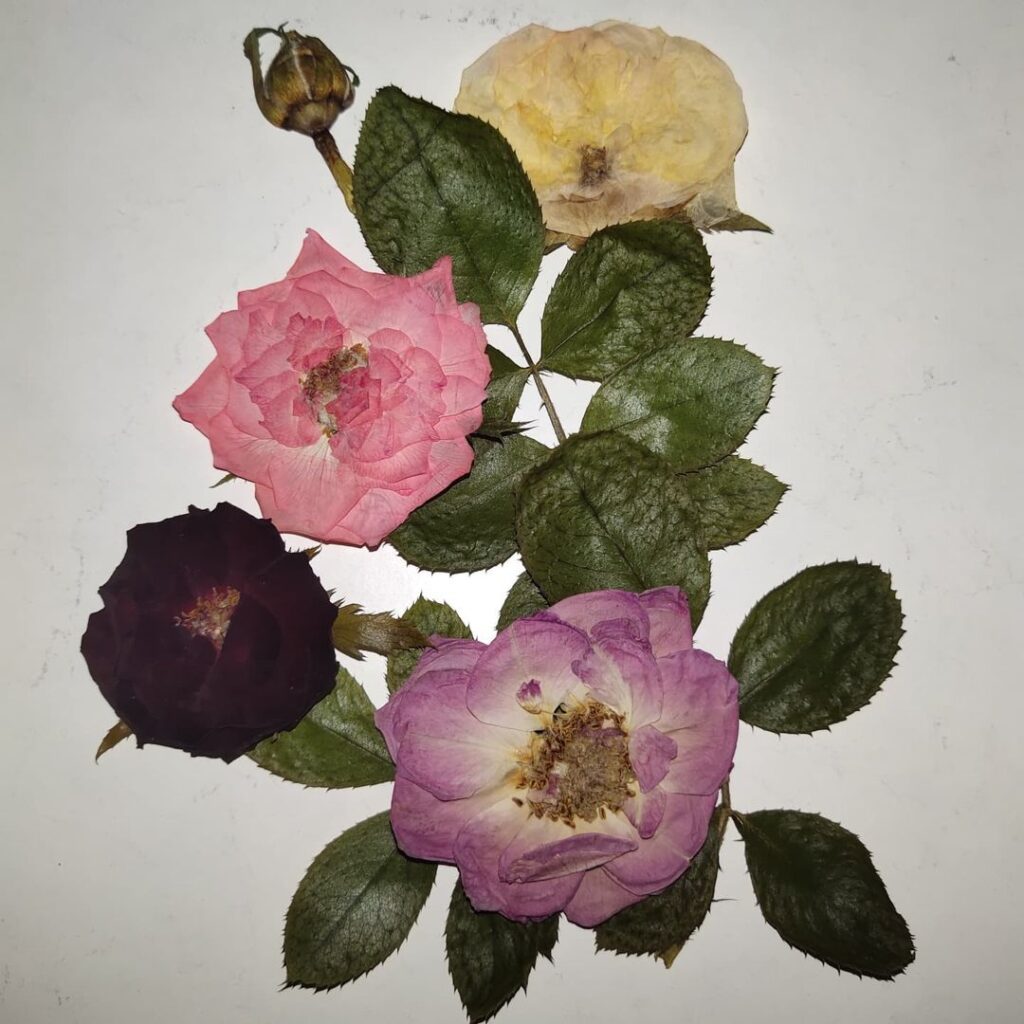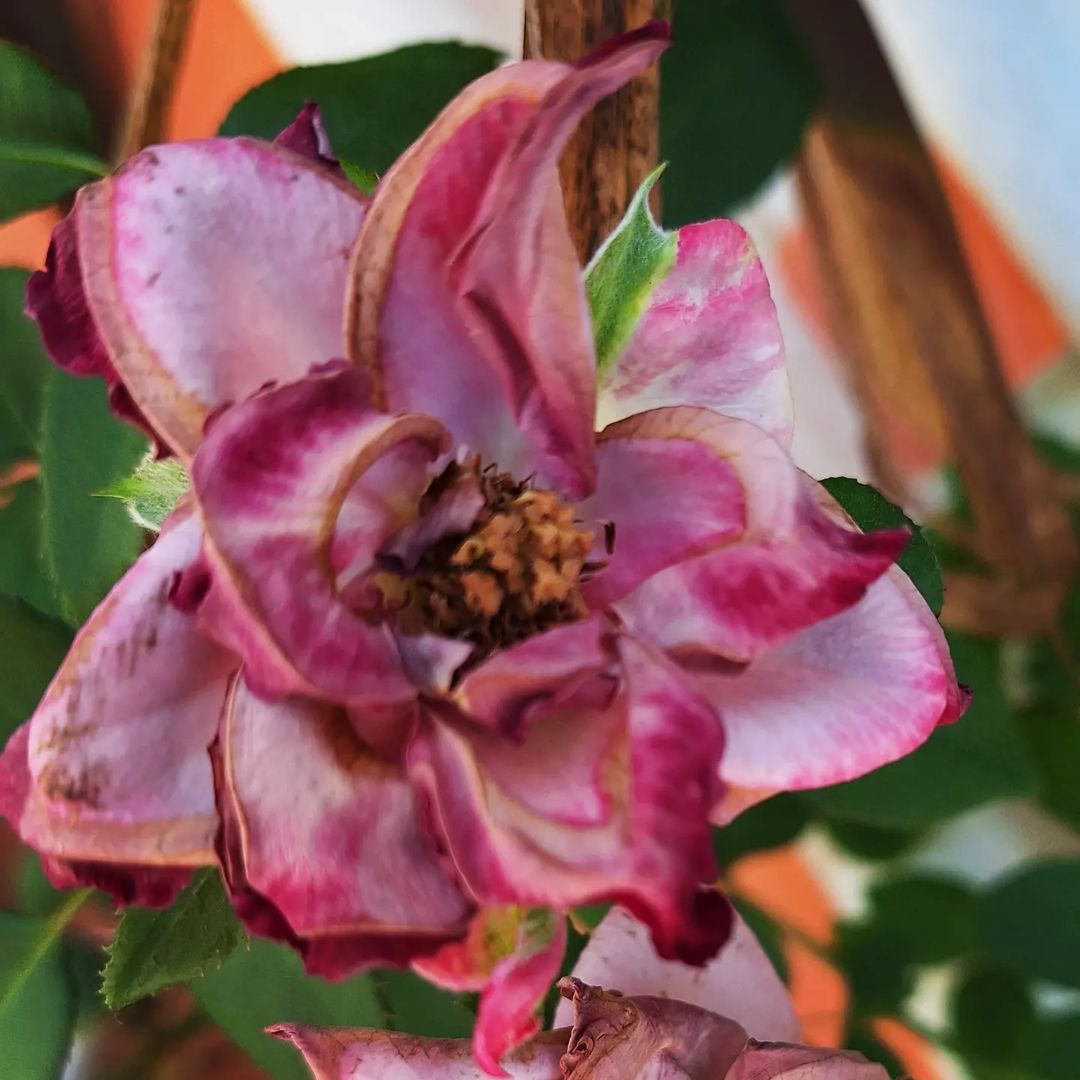How To Dry Roses: Preserving Beauty Beyond Bloom
Few sights evoke the timeless allure of a freshly bloomed rose, but what if its beauty could be preserved long after its petals have unfurled? Learning how to dry roses unlocks a delicate artistry that extends the lifespan of these botanical treasures. Whether you’re captivated by the romantic nostalgia of a David Austin rose or the classic elegance of a Hybrid Tea, preserving their essence allows you to cherish their beauty in new ways.
Imagine capturing the velvety softness of a Double Delight or the ethereal purity of Sugar Moon in their prime, frozen in time to adorn your home or create unique crafts. Beyond mere preservation, drying roses transform them into enduring symbols of love and elegance. Join us as we delve into the enchanting world of drying roses, exploring techniques that celebrate their colors, shapes, and fragrances. Discover how this ancient practice bridges the gap between fleeting moments and everlasting beauty, enriching your surroundings with the essence of a garden in bloom.
How To Dry Roses: 7 Perfect Ways
We’ll discuss the topic step by step. So, bear with us, and let’s dive into it:

Preparing Roses for Drying
Before embarking on the art of drying roses, proper preparation ensures the best results in preserving their beauty. Here’s a concise guide to preparing roses for drying:
Cleaning and Inspecting Roses
Ensure roses are free from pests, dirt, and imperfections. Gently rinse blooms under cool water and pat dry with a paper towel to remove excess moisture.
Selecting Roses at Peak Condition
Choose roses at their peak bloom, ideally in the morning when the petals are fully open. Avoid roses that are overly mature or showing signs of wilting.
Removing Leaves and Thorns
Carefully strip leaves and thorns from stems to prevent mold and ensure even drying. Use clean, sharp scissors to trim stems to the desired length for drying arrangements.
Handling Fragile Petals
Handle petals delicately to avoid bruising or tearing. Consider using silica gel or air-drying techniques to preserve the shape and color of each bloom.

Best Methods For Drying Roses
1) Air-Drying Roses: Preserving Elegance Naturally
Air-drying roses is a time-honored method that not only preserves their beauty but also enhances their charm with a natural, gentle process. Here’s how you can effectively air-dry roses to retain their color, shape, and fragrance:
1. Selecting Roses for Drying:
- Choose blooms that are just beginning to open fully for best results.
- Opt for varieties known for their long-lasting petals, such as Grandiflora or Hybrid Tea roses.
2. Preparation:
- Remove any leaves from the stems to prevent molding.
- Cut roses in the morning when their water content is highest for optimal preservation.
3. Hanging Method:
- Bundle 5-7 roses together with a string or rubber band at the stems.
- Hang them upside down in a dry, dark, and well-ventilated area.
- Ensure roses do not touch each other to prevent mold growth.
4. Drying Time and Conditions:
- Allow roses to air-dry for 1-2 weeks until petals feel crisp to the touch.
- Humidity levels should ideally be below 60% to prevent moisture retention.
5. Final Touches:
- Once dried, gently spray with a floral fixative or hair spray for added protection and longevity.
- Use dried roses in arrangements, crafts, or décor to enjoy their beauty indefinitely.
Air-drying roses not only preserve their delicate aesthetics but also allow you to savor the essence of your garden throughout the year.

2) Air-Drying Roses in a Vase: Preserving Elegance Naturally
Air-drying roses in a vase is a traditional and effective method that preserves the beauty of roses while allowing them to desiccate naturally. This process is favored for its simplicity and the ability to retain the shape and color of the blooms, making it ideal for crafting and decorative purposes.
Method Overview
1. Selection of Roses:
- Choose roses that are fully bloomed but not yet past their prime. Varieties with sturdy petals, such as Hybrid Tea and Grandiflora, work best.
2. Preparation:
- Trim stems to the desired length, ensuring they fit comfortably within the vase without overcrowding.
3. Vase Placement:
- Arrange the roses in a clean, dry vase without water. Ensure adequate spacing between blooms to facilitate airflow.
4. Drying Environment:
- Place the vase in a cool, dry area away from direct sunlight to prevent color fading and petal brittleness.
5. Patience in Waiting:
- Allow the roses to air-dry naturally for 1-2 weeks. Check periodically for dryness and adjust positioning if needed.
Benefits of Air-Drying in a Vase
- Preserves Color and Shape: Maintains the original hues and form of the roses.
- Cost-Effective: Requires minimal supplies and no special equipment.
- Versatility: Dried roses can be used for various crafts, décor, and even potpourri.
By following these steps, you can successfully air-dry roses in a vase, preserving their elegance and charm for months to come.

3) Using Silica Gel or Other Desiccant for Drying Roses
Introduction:
Drying roses using silica gel or other desiccants is a meticulous method that preserves the natural beauty of roses by gently extracting moisture while maintaining their shape and color. This technique is favored for its effectiveness in retaining the intricate details of petals and preserving the fragrance, making it ideal for crafting, decorating, and sentimental keepsakes.
Steps to Dry Roses with Silica Gel:
- Prepare Your Roses: Choose roses at their peak bloom, preferably in the morning when the moisture content is lower.
- Select the Desiccant: Silica gel is widely used for its ability to absorb moisture without damaging delicate petals. Ensure enough desiccant to cover the roses completely.
- Create a Bed of Desiccant: Spread a layer of silica gel in an airtight container, enough to bury the roses without touching the sides of the container.
- Position the Roses: Trim the stems and place the roses face-up on the desiccant bed. Carefully pour more desiccant around and over the roses, ensuring they are fully covered.
- Seal and Wait: Seal the container and place it in a cool, dry location away from direct sunlight. Check after 3-5 days; larger blooms may take longer.
- Remove and Display: Once dried, gently brush off excess desiccant and carefully handle the preserved roses for display or crafting.
Benefits of Using Silica Gel:
- Preservation of Color and Shape: Silica gel helps roses retain their vibrant colors and natural form better than air drying.
- Retains Fragrance: Unlike other methods, drying with silica gel preserves the roses’ fragrance.
- Versatility: Suitable for various types of roses and other flowers, making it a versatile option for floral preservation.
Using silica gel or other desiccants offers a reliable method to extend the beauty of roses beyond their natural lifespan, enabling you to create timeless decorations or cherished mementos that capture the essence of a garden in bloom.
4) Drying Roses Using a Microwave
Microwaving roses for drying offers a quick and efficient method to preserve their beauty while retaining much of their original color and shape. This technique is particularly appealing for those seeking a rapid preservation process without the weeks-long wait of traditional air drying. Here’s how you can achieve stunning dried roses using your microwave:
Steps to Microwave Drying Roses:
- Preparation:
- Select fresh roses just before they reach full bloom for best results.
- Remove any excess leaves and trim stems to a manageable length.
- Microwaving Process:
- Place a single rose or small bouquet between layers of paper towels or in a microwave-safe container filled with silica gel.
- Microwave in short bursts (about 30 seconds to 1 minute at a time) on a low setting to avoid scorching the petals.
- Check regularly to monitor progress and prevent overheating.
- Cooling and Finishing:
- Allow the roses to cool completely to room temperature after microwaving.
- Once cooled, gently brush off any silica gel or residue.
- Arrange or display the dried roses in a dry, cool place away from direct sunlight to maintain their color and shape.
Benefits of Microwaving Roses for Drying:
- Time-Efficient: Takes only a few minutes per batch compared to weeks for traditional drying methods.
- Preserves Color: Retains vibrant hues better than air drying.
- Maintains Shape: Minimizes distortion of petals compared to pressing methods.
By mastering the art of microwaving roses for drying, you can preserve their natural charm and use them in various decorative or sentimental projects throughout the year.
5) Pressing Roses: Preserving Botanical Elegance
Pressing roses is a time-honored method that delicately preserves the natural beauty of these beloved flowers. This technique not only retains their vibrant colors but also captures their intricate details, making them perfect for various decorative and sentimental uses.
Why Press Roses?
Pressing roses offers several advantages over other drying methods:
- Preservation of Color and Shape: By pressing, roses retain their original colors and shapes more effectively compared to methods like air drying or microwaving.
- Suitability for Crafts: Pressed roses are ideal for creating crafts such as greeting cards, bookmarks, and framed art due to their flat, compact form.
- Historical Significance: Dating back centuries, pressing roses has been practiced to document and preserve botanical specimens, adding a touch of historical charm to your floral preservation efforts.
How to Press Roses:
- Selection of Roses: Choose roses at their peak bloom with petals free from blemishes.
- Preparation: Trim excess stems and leaves, and place the roses between layers of absorbent paper.
- Pressing Process: Apply pressure evenly using a flower press or heavy books. Replace the absorbent paper every few days to aid in moisture removal.
- Drying Time: Depending on conditions, roses can take one to two weeks to fully dry.
Pressing roses not only extends their beauty but also offers a creative way to cherish and display nature’s ephemeral elegance. Whether you’re a seasoned artisan or a novice enthusiast, pressing roses invites you to explore the timeless art of botanical preservation.

6) Dehydrator: Preserving Roses with Precision
Drying roses using a dehydrator is a precise method that maximizes preservation while maintaining color and shape integrity. This modern technique offers efficiency and control over the drying process, ensuring consistent results with minimal effort.
Benefits of Using a Dehydrator for Drying Roses:
- Preserve Color and Shape: The controlled temperature settings of a dehydrator prevent color fading and maintain the natural shape of roses.
- Efficient Drying: Dehydrators remove moisture evenly, reducing drying time significantly compared to traditional methods.
- Retains Fragrance: Unlike air-drying, which can diminish the scent of roses, dehydrators often preserve their fragrance.
- Ideal for Bulk Drying: Perfect for drying large quantities of roses at once, making it suitable for craft projects or commercial purposes.
How to Dry Roses Using a Dehydrator:
- Prepare Roses: Select fresh, fully bloomed roses and remove excess foliage.
- Arrange in Dehydrator: Place roses on the dehydrator trays, ensuring they are not touching to allow for adequate airflow.
- Set Temperature: Typically, set the dehydrator to a low temperature (around 95-100°F or 35-38°C) to prevent overheating.
- Monitor and Rotate: Check periodically and rotate trays if necessary to ensure even drying.
- Storage: Once dried (usually within 24-48 hours), store dried roses in airtight containers away from direct sunlight to maintain quality.
Using a dehydrator for drying roses combines efficiency with preservation, making it a preferred method for both enthusiasts and professionals alike.
7) Roasting Rose Petals in a Conventional Oven
Drying rose petals in a conventional oven is a methodical process that preserves the delicate beauty and fragrance of roses, allowing them to be enjoyed long after they’ve been picked. This technique is ideal for those looking to create potpourri, homemade herbal teas, or decorative crafts. Here’s how you can masterfully dry rose petals using your kitchen oven:
Preparation and Collection:
- Selecting Roses: Choose fully bloomed roses with vibrant petals. Varieties like Grandiflora or Floribunda roses are ideal for their abundant blooms.
- Harvesting Petals: Carefully pluck petals from the roses, ensuring they are free of blemishes or discoloration.
Drying Process:
- Preparation: Preheat your oven to a low temperature, ideally around 180°F (82°C), ensuring it’s not too hot to avoid burning the petals.
- Arranging Petals: Spread the rose petals in a single layer on a baking sheet lined with parchment paper. Avoid overcrowding to ensure even drying.
- Drying Time: Place the baking sheet in the oven and leave the petals to dry for 1-2 hours. Keep an eye on them to prevent over-drying.
Storage and Use:
- Cooling: Once dried, remove the petals from the oven and let them cool completely on the baking sheet.
- Storage: Store the dried rose petals in an airtight container in a cool, dark place. They can last for several months when stored properly.
Uses:
- Crafts: Use dried rose petals in potpourri sachets, homemade candles, or decorative art projects.
- Culinary: Infuse dried petals into teas, and syrups, or use them as garnishes for desserts.
Drying rose petals in a conventional oven is a rewarding way to extend the life and allure of your favorite roses, transforming them into versatile ingredients for various creative endeavors.
How Long Do Dried Roses Last?
Dried roses can maintain their beauty and fragrance for an extended period if stored properly. Here are the key factors influencing their longevity:
- Storage Conditions: Store dried roses in a cool, dry place away from direct sunlight and humidity to prevent mold and color fading.
- Container: Use airtight containers or sealed bags to protect dried roses from exposure to air, which can accelerate deterioration.
- Duration: Properly dried and stored roses can last anywhere from several months to a few years. Varieties with thicker petals tend to last longer than delicate ones.
- Usage: The more gentle the handling and less exposure to light, the longer the dried roses will maintain their original appearance.
Understanding these factors ensures that your dried roses remain a cherished decoration or ingredient for an extended period, allowing you to enjoy their beauty long after their fresh counterparts have faded.
How to Preserve the Color of Dry Roses?
Preserving the vibrant color of dry roses enhances their aesthetic appeal and longevity. Here are essential tips to maintain their color:
- Quick Drying: Dry roses quickly in a well-ventilated, dark area to prevent color fading.
- Avoid Sunlight: Store dried roses away from direct sunlight to retain their original hues.
- Use Silica Gel: Opt for silica gel for drying, as it preserves colors better than traditional methods.
- Glycerin Soaking: Soak roses in a mixture of water and glycerin to maintain color and flexibility.
Following these methods ensures dried roses maintain their vivid colors, perfect for decorative arrangements and crafts.
What to Do With Dried Roses?
Once you have delicately dried your roses, there are numerous creative ways to enjoy and showcase their enduring beauty:
- Décor and Crafts:
- Potpourri: Combine dried rose petals with herbs and spices for aromatic potpourri.
- Decorative Art: Use petals in shadow boxes, framed art, or resin crafts for a timeless touch.
- Culinary Creations:
- Herbal Teas: Infuse dried rose petals into teas for a floral and soothing brew.
- Garnishes: Sprinkle petals over desserts like cakes and salads for a visually appealing finish.
- Home and Beauty:
- Sachets: Fill sachets with dried petals for natural fragrance in drawers or closets.
- Bath Soaks: Add petals to bath salts or oils for a luxurious, aromatic bath experience.
- Gifts and Tokens:
- Handmade Gifts: Create personalized gifts such as bookmarks, greeting cards, or scented sachets.
- Memorabilia: Preserve special moments like weddings or anniversaries with dried rose petals.
- Environmental Benefits:
- Natural Pest Repellent: Use dried petals to deter pests like moths in closets or drawers.
- Compost: After use, compost dried petals to enrich the soil with nutrients.
Dried roses offer endless possibilities for enhancing décor, culinary delights, self-care routines, and thoughtful gifts, making them a cherished keepsake beyond their blooming season.
Tips for Drying Roses
Achieving perfectly dried roses requires attention to detail and proper technique. Here are essential tips to enhance your drying process:
- Choose the Right Roses: Select roses at their peak bloom for vibrant color and maximum fragrance.
- Petals Preparation: Remove petals gently, discarding any damaged or discolored ones.
- Drying Environment: Opt for a dry, well-ventilated area to prevent mold formation during drying.
- Temperature Control: Use low temperatures (around 180°F or 82°C) to dry petals slowly and preserve their color and scent.
- Even Spreading: Arrange petals in a single layer on a baking sheet to ensure uniform drying.
- Monitoring Time: Check petals regularly to prevent over-drying, typically taking 1-2 hours.
- Cooling and Storage: Allow petals to cool completely before storing them in airtight containers in a cool, dark place.
Following these tips ensures your dried roses retain their beauty and fragrance for use in various crafts and culinary delights.
Frequently Asked Questions
1. How do you choose the best roses for drying?
Select roses at their peak bloom, ideally just before they fully open. Varieties with sturdy petals like Hybrid Teas or Grandifloras work well. Avoid roses that are fully mature or showing signs of wilting, as they may not dry as beautifully.
2. What is the best method for drying roses?
The most effective methods include air drying and silica gel drying. For air drying, hang roses upside down in a dry, dark place. Silica gel absorbs moisture quickly, preserving color well. Both techniques maintain the shape and fragrance of the roses effectively.
3. How long do dried roses last?
Properly dried roses can last for several months to years, depending on storage conditions. Keep them away from direct sunlight and humidity. With care, dried roses can retain their color and shape for extended periods, making them ideal for decorations and crafts.
4. Can you use dried roses in crafts and decorations?
Absolutely! Dried roses are perfect for various creative projects. They can be used in potpourri, wreaths, framed art, and even in resin jewelry. Their preserved beauty adds a touch of elegance and a nostalgic charm to any DIY endeavor or home decor.
Conclusion
In conclusion, mastering the art of drying roses opens a world of possibilities for preserving their natural beauty long after they’ve been cut. Whether you’re drawn to the vibrant hues of Hybrid Teas or the delicate petals of Grandifloras, proper drying techniques ensure their colors remain vivid and their forms intact.
By choosing the right method—be it air drying or silica gel—you can extend the lifespan of your roses and incorporate them into various crafts and decorations. Embrace this timeless practice to transform fleeting blooms into enduring symbols of elegance and charm in your home.

I’m Shofi, a passionate gardener and blogger. I have 10+ years of experience in gardening and hold certifications in horticulture and garden design. I share my knowledge and skills through my garden blog to inspire and educate others on the joys of gardening. I try to provide valuable information and create a community for gardeners of all levels to connect and learn. My ultimate goal is to inspire others to start their own gardens and connect with nature.

